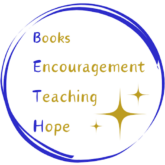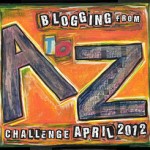 Juxtaposition. A satisfyingly long word. In its simplest sense, it means placing something next to something else.
Juxtaposition. A satisfyingly long word. In its simplest sense, it means placing something next to something else.
In film, it is particularly “the contiguous positioning of either two images, characters, objects, or two scenes in sequence, in order to compare and contrast them, or establish a relationship between them; see also sequence, symmetry, and composition.” That definition is quoted from the AMC Filmsite’s Film Terms glossary.
Juxtaposition is an excellent tool for writers as well, to highlight similarities or differences in character, setting, or action. As in film, two disparate characters in juxtaposition can bring depth to the writing, and can draw the reader further into the story.
Today, I’m placing two similar blogposts in juxtaposition. Yesterday I told you about books written by Canadian author Beverley Brenna, today I have interviewed Bev specifically about these books and about Asperger’s Syndrome which informs and challenges the main character’s life in both books. This is, again, by request of my friend Pat Tilton, whose blog Children’s Books Heal, continually brings to the forefront of our consciousness an awareness of kids with special needs.
For Autism Awareness Month in the U.S., then, I am juxtaposing the book recommendations yesterday and the interview today. (Again, I apologize that this post is longer than the suggested standard for an A to Z post. I believe you’ll find it well worth the extra time it takes to read.)
Beverley Brenna was born and raised in Saskatoon, Saskatchewan, a city on the Canadian prairie, and still lives nearby. Her love of nature is threaded through all her books. She has worked as an elementary school teacher, a special education teacher, a special ed consultant, and is now a Professor of Education teaching English Language Arts. She writes and has been published in many different genres: picture books, with Daddy Long Legs at Birch Lane, a Smithsonian book, being the prime example; middle grade novels including The Keeper of the Trees and The Moon Children; young adult novels such as Wild Orchid, and Waiting for No One; she has a collection of short stories, Something to Hang On To; and also writes poetry for children and adults. Her most recent novel, Falling for Henry, was released in the fall of 2011.
Bev, thanks so much for this interview. Although previously I’ve interviewed you about writing in general, since April is Autism Awareness Month, I’d like us to focus on your books about Taylor, who deals with Asperger’s Syndrome.
ME: Some of my blog readers are avid fans of your books already, but I have many new readers as well. For those who aren’t familiar with your books, could you give us a brief synopsis of Wild Orchid and Waiting For No One?
BEVERLEY: Wild Orchid introduces the character of eighteen-year-old Taylor Jane Simon, a teen who spends a summer seeking adulthood through a new job and a boyfriend. She realizes that being an adult is much more than these two singular achievements, and through the course of the novel deals with many universal coming-of-age challenges as well as dealing with challenges specific to her Asperger’s Syndrome. One of the reasons for writing Wild Orchid was to spotlight a setting that I thought deserved to be commemorated in print—Saskatchewan’s astounding nature preserve bordering the boreal forest, Prince Albert National Park (Waskesiu Lake, to those who know it locally). Taylor gains insight from a play by Harold Pinter called The Birthday Party, and while Taylor isn’t quite sure what she wants to be in her life, she begins to fathom what she doesn’t want to be—a character like Stanley, in Pinter’s play, wholly dependent on others, to his own detriment.
Waiting for No One continues the story of Taylor Jane as she transitions into first year university and the world of work in a Saskatoon bookstore. Samuel Beckett’s existential play Waiting for Godot offers her fuel for what she eventually sees as a struggle for independence from external forces seeking to prevent her successful journey into adulthood. Her sidekick, a gerbil named Harold Pinter, is a helpful and tangible reminder of the pleasures life has to offer, if she chooses to go forward instead of waiting for a phonecall that may or may not ever come.
ME: When you began writing Wild Orchid, did you plan for the character to have Asperger’s Syndrome, or was that a discovery you made as you explored Taylor’s character and story?
BEVERLEY: Taylor was crafted a lot like me as a middle teen, and as I began a second draft of the novel it occurred to me that she was quite boring…and so I took some of the quirks that had been developing in her character and nudged them quite consciously onto the autism spectrum—the latter was something I wanted to learn more about and my choice to position Taylor in that circle of gifts and challenges was helpful to me in this regard.
ME: Could you talk a bit about Asperger’s in general, and about how it affects Taylor’s life in particular?
BEVERLEY: Tony Attwood, an internationally respected expert on Asperger’s syndrome, has complete and detailed information on his website: http://www.tonyattwood.com.au/. I had the pleasure of meeting Dr. Attwood during a trip to Australia where I heard him speak, and from him and other research I learned a lot about the sensory integration differences, the social differences, and the perspective differences that Asperger’s Syndrome carries. Basically a key thing to remember about people with Asperger’s is that they interpret the world differently than “neuro-typical” people because of the way their brains are constructed. Sometimes this is a tremendous gift, as with Temple Grandin—the well known agricultural engineer who “thinks in pictures.”
ME: Waiting For No One recently was awarded the Dolly Gray Children’s Literature Award. Congratulations! It’s very definitely a well-deserved honor.
Quoting from the website of that award, “Every even year, The Division on Autism and Developmental Disabilities (DADD) of the Council for Exceptional Children (CEC) in collaboration with Special Needs Project sponsor the Dolly Gray Children’s Literature Award to recognize effective, enlightened portrayals of individuals with developmental disabilities in children’s books.”
I know you went down to Florida to accept the award, and to attend some of the conference where the award is presented. Could you tell us a bit about that experience and what new things you may have learned at the conference?
BEVERLEY: It was a tremendously good conference and I met great special education connections who have already helped me with my next and last book in the Taylor Jane series: The White Bicycle (due from Red Deer Press next fall). One of the keynote speakers was a young man named Taylor Crowe (http://taylorcrowe.com) who talked about how the loss of language with his own preschool-onset autism was highly frustrating. He has a wonderful DVD that identifies why negative behaviors are present in many children who experience the communication difficulties associated with autism, and how people who want to support these children can help. As well as being a great speaker and advocate, Taylor is a brilliant artist and I’m really hoping to involve him in some way in the cover design of my next novel.
ME: Do you have any suggestions for people who have family members, friends or students with Asperger’s, or some other manifestation of Autism Spectrum Disorder?
BEVERLEY: For anyone interested in Asperger’s or the wider Autism Spectrum Disorder, it’s important to get educated using reliable and authentic sources. I recommend the work of Tony Attwood, because he describes possible gifts as well as potential challenges for people, presenting a balanced view of what it means to have this diagnosis.
ME: Do you have any words of advice for writers who want to write books for special needs kids, such as picture books or middle grade novels with a protagonist who has special needs?
BEVERLEY: Same as the above—get educated! It’s important to present authentic representations of any characters we as writers create, not simply propagate stereotypes. I’ve had some very helpful criticism on early drafts of my work from people involved with Autism Services organizations, and others who have great credentials in studying various parts of what having autism truly means. I’ve also listened to my readers, many of whom email me with kudos indicating what part of Taylor reminds them of themselves—and it’s nice to know when I get it right.
ME: And finally, for your fans out there, is there a progress report on the next Taylor Simon novel that you can share?
BEVERLEY: One aspect of my research on books about characters with disabilities is a realization of a trend where these characters rarely get to travel outside of their own home and community environments. In the third and final novel of the series, we see Taylor Jane moving to France for an unforgettable summer, and I hope this book adds incentive to other writers in terms of breaking the cycle of homebound plots. Travelling isn’t easy for Taylor—but it is certainly interesting, and how she approaches her challenges with adapting to a new environment can, I hope, help us all in our quests for breaking out of whatever unhealthy patterns we see in our own lives. In this way I hope that Taylor has a universal as well as a personal message: life can be difficult, but it can also be full of joy and accomplishment.
ME: Thanks again, Bev, for spending this time with us. All the best in everything!
BEVERLEY: Thank you!


Thank you Beth for popping over to visit my blog. The A to Z month does make it difficult to fit in all those other interesting posts that we’d usually be working on but then it gives us a chance of meeting interesting bloggers like yourself!
This is a fascinating interview and a complex but interesting area. I like the way that Beverley found her main character to be boring at first. I have that problem. What an interesting way of dealing with the problem and it sounds like Beverley has hit on a winning idea.
Hope to pop back soon.
A to Z of Nostalgia
Thank you so much, Rosalind! Beverley is such a creative person, that it’s no surprise she found a creative way to deal with a boring character. Hope you hit on an equally winning idea!
Yay, Taylor is coming to France. You don’t know how excited that makes me, Bev! Now that I think of it, I think mentioned you being over here last summer when I was in the US!
I like Taylor’s transition from boring protagonist to highly fleshed out strong personality on the autism spectrum. I also appreciate your success in depicting a special needs character with such success, despite not having had siblings or children with Aspergers. If we truly educate ourselves, as you recommend and this is right for our character, I do believe authenticity is achievable.
Lovely to hear from you Bev, as a fan of your books and having heard such great review from Beth. And congratulations on Dolly Gray Children’s Literature Award!
Thanks, Joanna! I made sure Bev checked in and read the comments. And yes, she was in France last year while you were in the US — some day the two of you need to meet up!
I thoroughly enjoyed the interview Beth and Bev. Bev, congratulations on the Dolly Gray Children’s Literature Award! Yes, I am a fan of your books about Taylor and can’t wait for the fall release of “White Bicycle.” She is a strong protagonist and in many ways represents the struggles of all young adults. Taylor has come a long way from riding in a car, to taking a bus across the country to flying to France and being totally out of her comfort zone. It sounds like the setting for another great journey with Taylor. I still applaud your writing this trilogy, as there is nothing else like it. You offer hope to teens/young adults and parents that they will lead happy productive lives. I just watched the video and looked at the website of Taylor Crowe — a role model for many and a great advocate. I enjoyed his positive perspective on living with AS. He’s giving hope to many. He’s also quite an artist and I hope you are able to work him on the cover design of your next novel. Great interview!
Thanks so much, Pat. Bev emailed me to let me know she was sending the link to this post and the comments to Taylor Crowe, as she thought it would mean a lot to him. It means a lot to me that he’ll be looking at it, and seeing the great comments!
Juxtaposition! Another great word! (I knew this one this time 🙂 ! I really enjoyed your interview with Ms. Brenna. I think it is very important for people to learn about Autism and Asperger’s syndrome. Books like hers helps!
Yay you! I didn’t know that word until I was in college! I’m glad you liked this interview with Ms. Brenna, and I agree with you that books like hers help people to get to realize that people with Autism and Asperger’s are still regular people, who just see things a little differently than others.
You might like Ms. Brenna’s book The Moon Children. It’s a middle grade novel about a boy who has Fetal Alcohol Syndrome, and a girl who has stopped talking — but mostly it’s about two kids who get to be friends, and it has a lot of cool yo-yo tricks in it, too!
What a great way to incorporate what you wanted to say while sticking with the challenge. While the challenge has made it easier for me to organize my thoughts and post ahead, it is somewhat limiting. I really like the way you made it work for you with this great post! So glad to have found your site.
Thanks so much, Kristin. I have found the challenge, er, “challenging” at times, to say what I want to say and keep within the theme I chose. But it’s been fun!
I’m glad you found my site, too! Hope you’ll come back again!